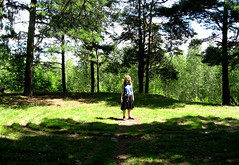Halloween ? It’s English Celtic History
Many years ago in the 1920’s my great Aunt Hilda ( An ex Headmistress and Suffragette ) traced our family tree back to the Kings and Queens of England from the 7th Century. This basically means I am related to most of the British Royal Family going back 1500 years. This has made me a great fan of English Traditions and British history and the English story of Halloween.
The festival of “All Hallows Eve” or the more ancient named “Samhain” celebrates the end of the “lighter half” of the year and beginning of the “darker half”, and is sometimes regarded as the “Celtic Briton’s New Year”. Halloween and other pagan festivals were celebrated by the Celtic Briton and Irish Tribes 2,000 years ago and over the centuries the festivals were renamed by the Catholic Church.
The ancient Celtic Britons believed that the border between this world and the Otherworld became thin on Samhain, allowing spirits (both harmless and harmful) to pass through. The family’s ancestors were honoured and invited home while harmful spirits were warded off. It is believed that the need to ward off harmful spirits led to the wearing of costumes and masks. Their purpose was to disguise oneself as a harmful spirit and thus avoid harm. In Scotland the spirits were impersonated by young men dressed in white with masked, veiled or blackened faces. Samhain was also a time to take stock of food supplies and slaughter livestock for winter stores. Bonfires played a large part in the festivities. All other fires were doused and each home lit their hearth from the bonfire. The bones of slaughtered livestock were cast into its flames. Sometimes two bonfires would be built side-by-side, and people and their livestock would walk between them as a
